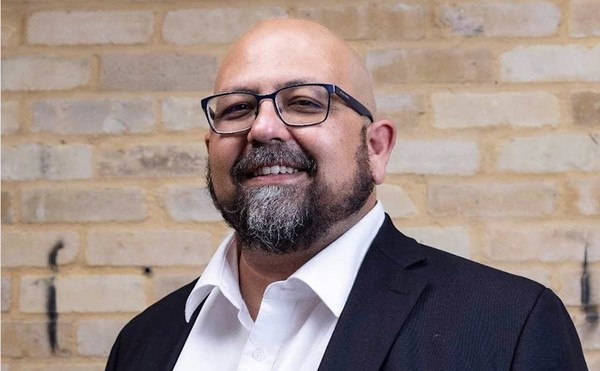German-born Sebastian Lang-Lessing’s resume is dotted with places that read a bit like the set locations for a Bond movie. With posts as the conductor-in-residence of the Deutsche Oper Berlin, chief conductor and artistic director of the Orchestre Symphonique et Lyrique de Nancy in France, and most recently, chief conductor and artistic director of the Tasmanian Symphony in Australia, Lang-Lessing, at age 44, has already become a force in the world of international classical music. And on Saturday, October 2, he’ll give his first concert as the music director of the San Antonio Symphony.
This talent that has regularly led performances for the major opera houses and symphonies in Paris, San Francisco, Hamburg, Houston, Tokyo, Strasbourg, Oslo, and Cape Town, now represents the culmination of a committee search that lasted three years and drew almost two hundred candidates.
Not least among Maestro Lang-Lessing’s accomplishments, one that must have caught the attention of the San Antonio Symphony search committee, is his transformation of the French Opéra de Nancy, a regional opera house, into a company with national status, the Opéra National de Lorraine.
He effected a similar transformation of the Tasmanian Symphony Orchestra. It is instructive to look at the Australian press’s response to Lang-Lessing over the course of the six years he has directed that orchestra. While some evinced skepticism of Lang-Lessing (“I am still finding it difficult to enjoy Lang-Lessing’s Mozart interpretations,” wrote critic Peter Donnelly.) by the time the 2010 season commenced, this sentiment had turned to something else entirely. In a rapturous review of the season’s debut concert last March, Donnelly followed up by saying, “It is no accident that this orchestra has now achieved a national profile unimaginable as recently as 10 years ago. … Perhaps the most important ingredient has been the orchestra-building skills of resident conductor Sebastian Lang-Lessing.”
The arrival of Maestro Lang-Lessing gives us grounds for optimism with respect both to the short- and long-term prospects of the San Antonio Symphony (and by extension, hope for the cultural vitality of our city). Lang-Lessing’s four-year contract will take him through the 2013-14 season, which means that, if all things go as planned, he will be here to see the orchestra through its move to the Tobin Center for the Performing Arts, formerly the Municipal Auditorium, which is scheduled to open in September, 2013. The centerpiece of the rather grand improvements planned for the site is an auditorium designed from the ground up for its acoustic qualities, thus making it far superior to the orchestra’s current base, the beautiful but acoustically-eccentric Majestic Theatre.
In the long-term, the challenge faced by the symphony is one confronting orchestras the world over, and indeed, classical music itself: namely, the fragmentation of what was once a relatively unified listening public and the general graying of the classical musical audience. Lang-Lessing is fully aware of this situation. In an interview with John Clare of KPAC, he acknowledged that if this state of affairs continues, in 20 years “it” – that is to say, a living tradition of classical music – “will be gone.” This is a thought too dreadful, almost, to contemplate, but we can derive some assurance from the thought that Lang-Lessing is fully cognizant of the problem and well-equipped to move the symphony forward.
It was recently announced that the first concert of the season – featuring the vocal music of Bizet and Brahms as well as Mahler’s crowd-pleasing first symphony, “Titan” – has already sold out. This is a promising sign. It is not selfishness alone that makes us want the symphony not merely to survive, but thrive, for where else can be found, can be heard and seen and felt, a work of art created by the joint action of more than seventy-odd men and women working together to create a whole composed of countless, minutely-organized yet distinct gestures? The symphony should play a central role in our community, not least because it offers, in itself, an image of the ideal of community as such: the creation, out of different sounds and timbres, of concord, symphonia, harmony: e pluribus unum. That is a quality for which, like beauty itself, our need is, and will always be, bottomless. •
















